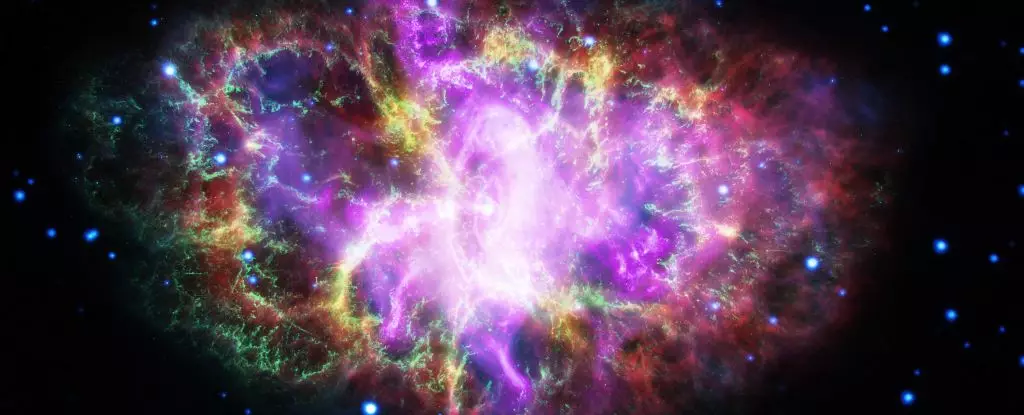In the midst of urban chaos, where the glow of streetlights often outshines the stars, a unique experience unfolds. Tucked away in my modest San Diego backyard, my telescope stands poised, transforming my mundane surroundings into a doorway to the cosmos. As I peer through the lens at the stellar marvel that is the Pinwheel Galaxy—a magnificent celestial formation containing approximately a trillion stars—I’m reminded of the profound connection between humans and the vast universe. My wife, Cristina, joins me just as the first image materializes on my tablet screen, igniting a cascade of thoughts and discussions that bridge science and wonder.
Cristina’s innocent query about the journey of light sparks an enlightening dialogue. “Doesn’t light get tired during such a long journey?” she asks. This question leads us to ponder the nature of light itself and its extraordinary journey through time and space.
The Dance of Light: Understanding Its Nature
Light, in its essence, is more than mere illumination; it is electromagnetic radiation, intertwining electric and magnetic waves as it traverses the expanse of the universe. The intriguing aspect of light is that it possesses no mass. This property not only allows it to travel at incredible speeds—approximately 186,000 miles per second—but also to maintain its energy over vast distances. Unlike objects with mass that are constrained by the laws of physics, such as a car or an airplane, light races across the universe unencumbered, reaching us from unimaginable distances.
To illustrate this, consider our very own Sun, located about 93 million miles away. It takes sunlight a little over eight minutes to reach Earth, meaning each beam we see is a fleeting remnant of the Sun’s past. Moreover, the closest star beyond our solar system, Alpha Centauri, is 4.37 light-years away—its light took over four years to arrive at our eyes on Earth. Here lies an awe-inspiring reality: while we experience light instantaneously, it is a delivery from history, a glimpse into the distant past conveyed in brightness.
Light’s Relentless Journey: Energy and Diminishment
Cristina’s question about whether light tires during its travels invites deeper reflection. The truth is, energy loss in light exists, primarily when it interacts with matter—scattered and absorbed by cosmic dust, for example. Yet, in the vast stretches of the universe, where emptiness dominates, light generally travels unimpeded, losing neither momentum nor energy. It persists through the void, a steadfast traveler in the cosmos.
Therefore, it is not fatigue which complicates light’s journey; instead, it is the absence of obstacles that allows it to maintain its pace. In this way, light serves as a cosmic messenger, bringing distant stories from billions of light years away into our backyard observatories.
Time and Motion: The Relativity of Light
Venturing further into the uncharted territory of astrophysics, we come to the intriguing concept of time dilation. Imagine an astronaut aboard the International Space Station, moving at 17,000 miles per hour; time appears to slow, even if imperceptibly, compared to someone grounded on Earth. This phenomenon underscores the relativity of time, which is profoundly interlinked with the speed of light.
Envision a photon—a particle of light—embarking on its voyage. To it, time ceases to exist; its travel through space becomes instantaneous and paradoxically endless. The clock on Earth, however, ticks on relentlessly, measuring eons while light completes its seemingly timeless journey. This stunning juxtaposition reminds us that time and space are not absolute but are entwined in a delicate balance dictated by the laws of physics.
The Shared Experience of Cosmic Wonder
As we continue our celestial discussion on that spring evening, I can’t help but reflect on how these complex concepts illuminate not only the nature of the universe but also the human experience. The intricate dance of light, time, and space holds profound implications for our understanding of existence. Each twinkle in the night sky beckons us to contemplate our place in this vast fabric of reality.
Looking again at the image of the Pinwheel Galaxy shimmering on the tablet, I recognize that this cosmic snapshot embodies much more than its scientific features. It represents a bridge connecting us to the universe—a manifestation of our curiosity, our quest for understanding, and the awe that accompanies uncovering the mysteries of existence.
In a world clouded with distractions and noise, moments spent contemplating the cosmos allow us to rekindle our sense of wonder and nourish our innate curiosity. Every flicker of light is an invitation to delve deeper into the awe of the universe, allowing us to share our findings and experiences with those we love. Each glance at the stars is not merely a visual experience but a profound dialogue with nature itself—a reminder of our interconnection with everything that exists.


Leave a Reply